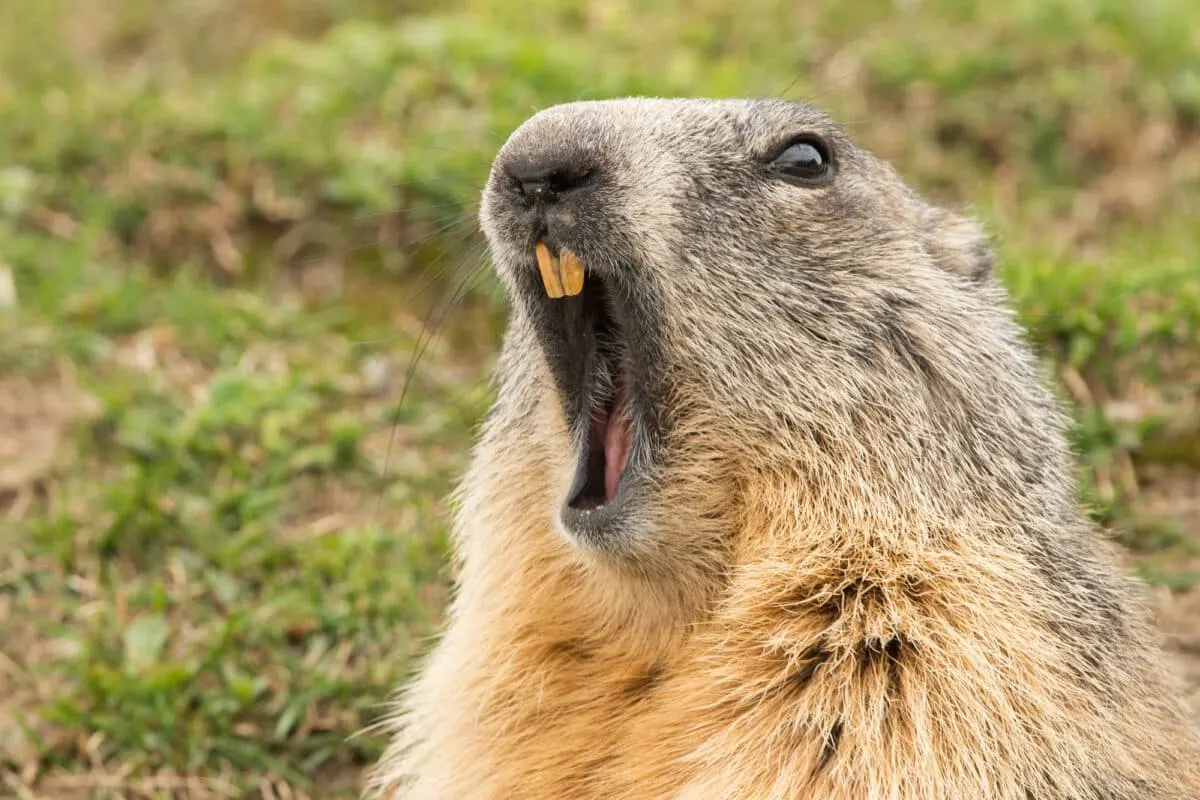Welcome to this piece on the woodchuck vs. groundhog. You may think that this will be a comparative article – and understandably so! But, actually, woodchucks and groundhogs are just two different names for the same animal.
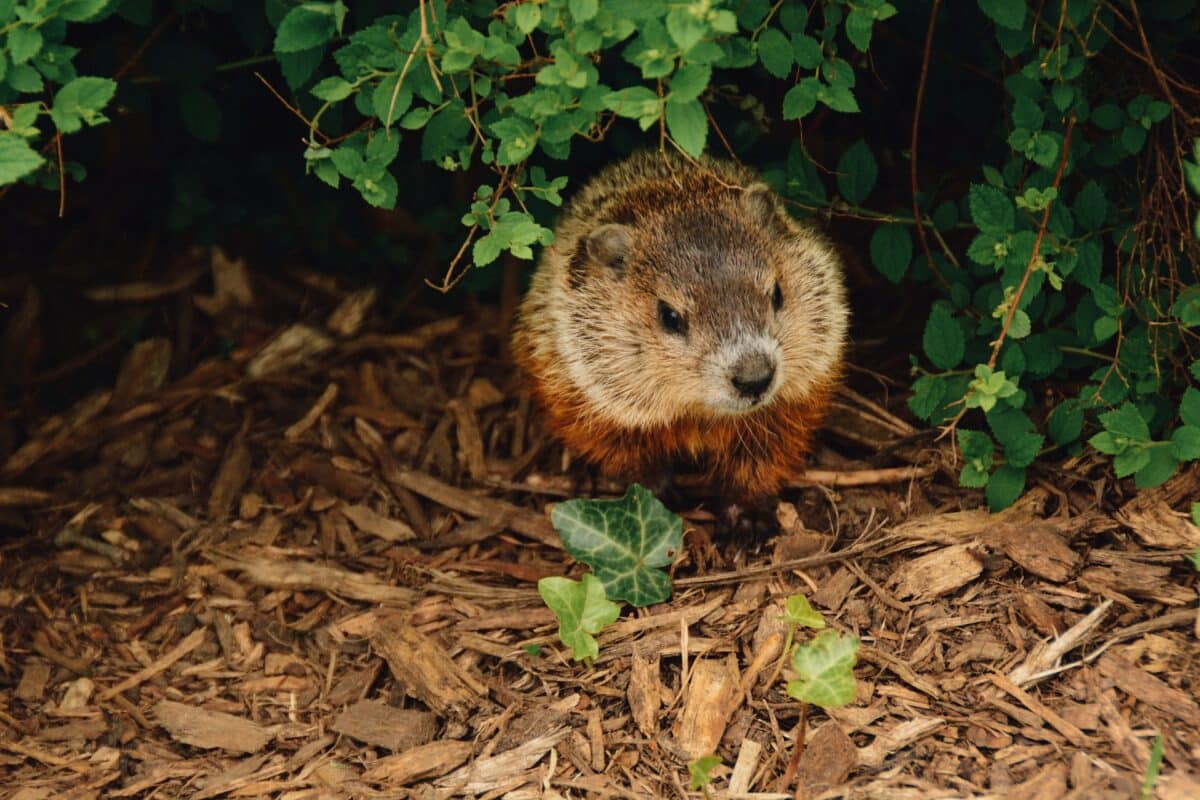
Wildlife is full of amazing and sometimes mysterious creatures, some come with confusing and unexpected names.
Woodchuck and groundhog are the names of the same animal. In America, they are known as woodchucks, but in some other regions of the world, they are called “groundhogs.” It might seem confusing since the two names are so different from each other.
They reside across North America, South America, Central America, Europe, Asia, and even some regions of Africa. It is a sizable rodent known by various names: woodchucks, Canada marmots, and groundhogs.
These are rodents from the Sciuridae family, a family which also includes prairie dogs, marmots, squirrels, and chipmunks. Let’s find out what a woodchuck eats, where it gets its food from, and what kinds of animals prey upon it.
The History of Their Names: Woodchuck vs. Groundhog
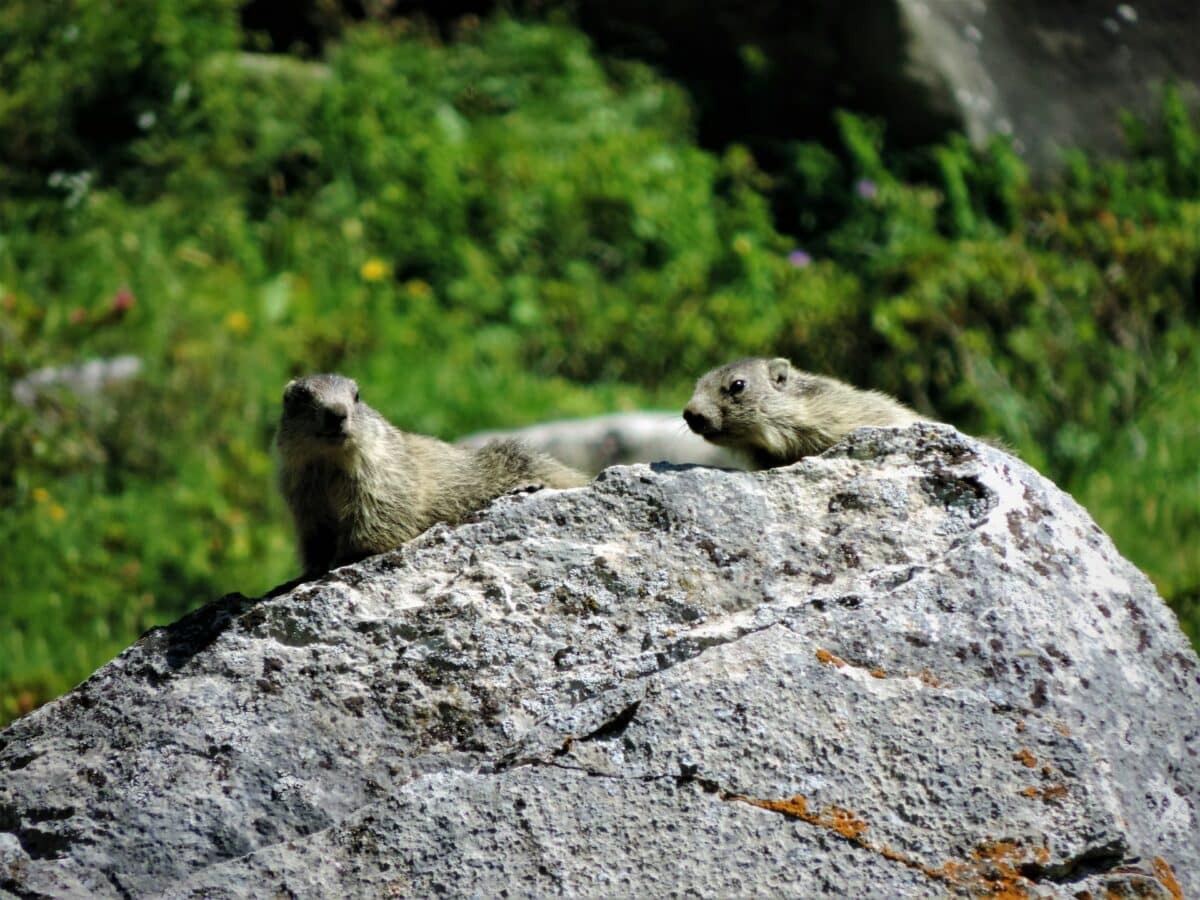
There is nothing mysterious about giving the same animal two different names depending on the state where they are found.
- History Of The Name “Woodchuck”
The Algonquin group of Native Americans formerly referred to woodchucks as “wuchak,” hence their common name. English settlers probably created the name “woodchuck” by attempting to utilize that word.
They are also known as land beavers and whistling pigs, depending on where you live in the state. Contrary to common belief based on their title or popular culture, woodchucks do not chuck, smash, or fling wood.
- History Of The Name “Groundhog”
Its species name is “monax,” which means “the digger.” Groundhogs or woodchucks are believed to stem from one Native American term. The animals are now often referred to as groundhogs in some regions of America.
All About Woodchucks/Groundhogs
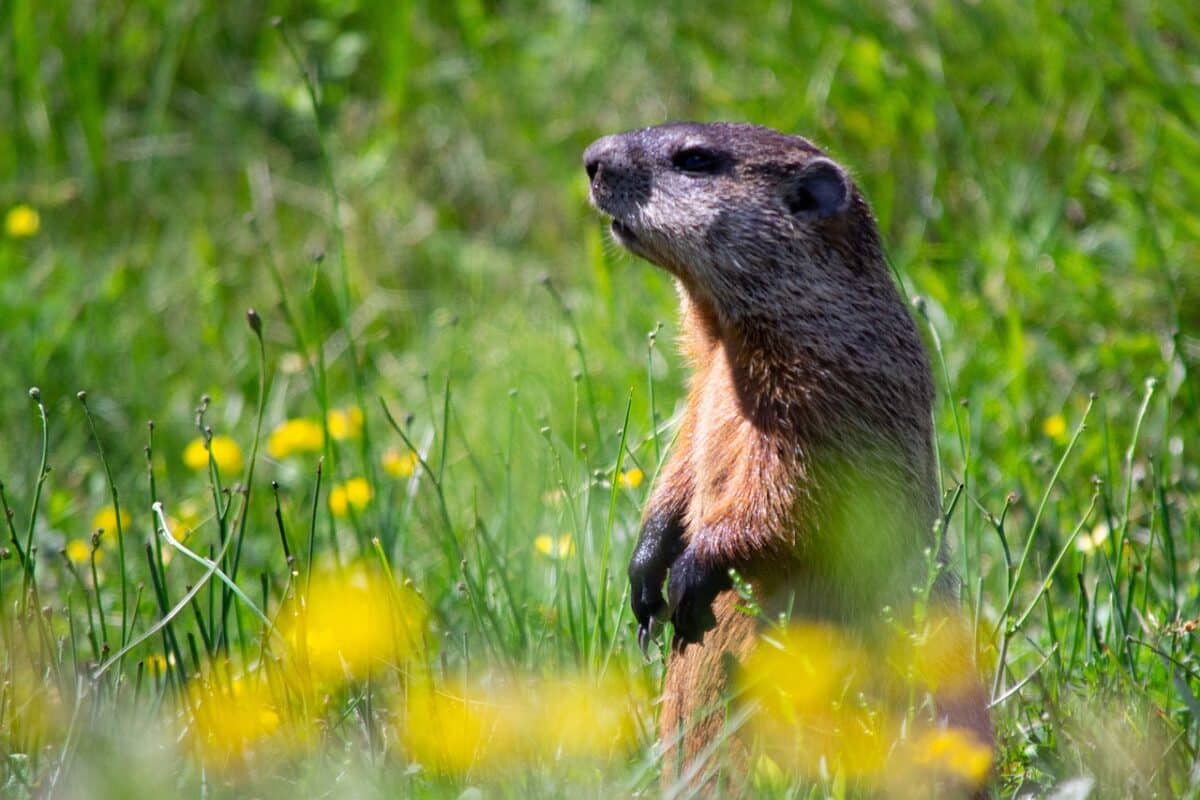
The oldest relatives of the squirrels family are groundhogs. The groundhog is arguably most famous for their ability to predict the weather, albeit their results might be inconsistent.
Habitat
Typically, they create burrow systems that can stretch over 50-100 feet, usually 6 feet underground. Their chambers are typically 15 inches in diameter, connected via 4-6 inches-wide pathways. Due to the many entrances these underground houses can have (2-12 openings), they prefer wooded locations that border more open places.
Woodchucks keep their underground burrows neat by occasionally switching out the nesting material found inside. Moreover, they have multiple burrows — one in the forests for the wintertime and one in grassy regions for the summer.
Lifestyle
Woodchucks are solitary, diurnal mammals that are active during the day. They typically eat in the mornings and late afternoons during the summer, napping or sunbathing most of the day.
In the summer, they typically only consume two meals daily, each lasting up to two hours. They don’t have many predators, yet, when confronted, they will arch their bodies, bare their teeth, and lift their tails. In preparing to transition to their wintertime dens, frequently found in wooded areas, they start gaining weight in the late summer.
Appearance
Despite lacking a tail, woodchucks resemble beavers in appearance due to their deep grey undercoat and long, light brown guard hair on top. They have short, powerful legs attached to their heavy body, which are vital for their digging.
Also, they have massive front upper teeth that they wear away by gnawing to prevent them from reaching unsustainable lengths. Their feet range in color from dark brown to black.
Additionally, they have white around their noses and yellowish-brown to brown fur with a slightly frosted appearance. They grow to a length between 16 and 20 inches, weigh between 5 and 10 pounds, and have a tail of 4-7 inches.
Diet
The majority of the food that groundhogs eat is wild grass and other plants, as they are herbivores. These creatures are primarily vegetarians and eat a wide range of grasses, chickweeds, clover, plantains, and many other wild and domesticated flowers.
They can also consume bark, insects, snails, berries, other fruits, and the bark of maple and hickory trees. Their favorite plants include dandelion, clover, and alfalfa.
In the summer, they eat twice a day for around two hours and store fat for their hibernation in the winter.
Woodchucks’ metabolism slows in the summer, so even though they consume less food, they can gain up to 100% more weight by producing fat deposits that sustain them during hibernation.
Mating Habits
Late winter or early spring is when male groundhogs usually come out of their burrows after hibernating. On the other hand, females come out of hibernation a few weeks later, and mating takes place in late March or early April.
Male groundhogs mate numerous times per season because they are polygynous. The reason that they come out of hibernation earlier than females is so they can build dominant hierarchies, establish territories, and look for mates.
The exact time of mating, which varies by latitude and typically lasts from early March – mid or late April, occurs shortly after hibernation in the spring. Female groundhogs only have one reproductive phase a year.
Other than for mating purposes, female and male woodchucks don’t engage with one another. Since woodchucks do not form permanent couples, dominant males will mate with various females throughout this time.
Reproduction
The usual gestation period for a groundhog female is 30 to 33 days. In her underground home or burrow, the female groundhog builds a nest out of plant fibers during this period, where she will give birth and raise her offspring.
These dens have many exits and entrances and are typically built in well-drained soil alongside hedgerows and on the edges of woodlands. Younger females often have smaller litters of pups, with the majority of litters containing 3 to 5 pups.
At around two months old, puppies quickly develop their independence and separate from their mothers. While some groundhogs reach reproductive maturity at age 1, it’s more common for them to reach it at age 2.
Distribution
The open spaces that groundhogs prefer to inhabit include fields, open forests, hillsides, and rocky slopes. They are widely distributed, particularly in the eastern part of North America. In the west, these miniatures are found across the Northwest territories up to Alaska.
In the east, they can be found in Georgia, Alabama, Ontario, and northern Quebec. They can also be found in large numbers in New England, where they reside in fields, meadows, clearings in the woods, and highway medians.
They often dig their burrows in locations where they may get sustenance from short-growing plants like luxuriant grasses and tend to stay away from swampy environments.
Lifespan
When woodchucks reach the age of two, they mate for the first time right after emerging from hibernation in the spring.
The female takes care of the little ones, who are weaned at about 45 days old. When they are about two months old, they depart from their mother. Woodchucks live about four to six years in the wild. In captivity, they often have a 10-year lifespan.
Fun Facts About Woodchucks/Groundhogs
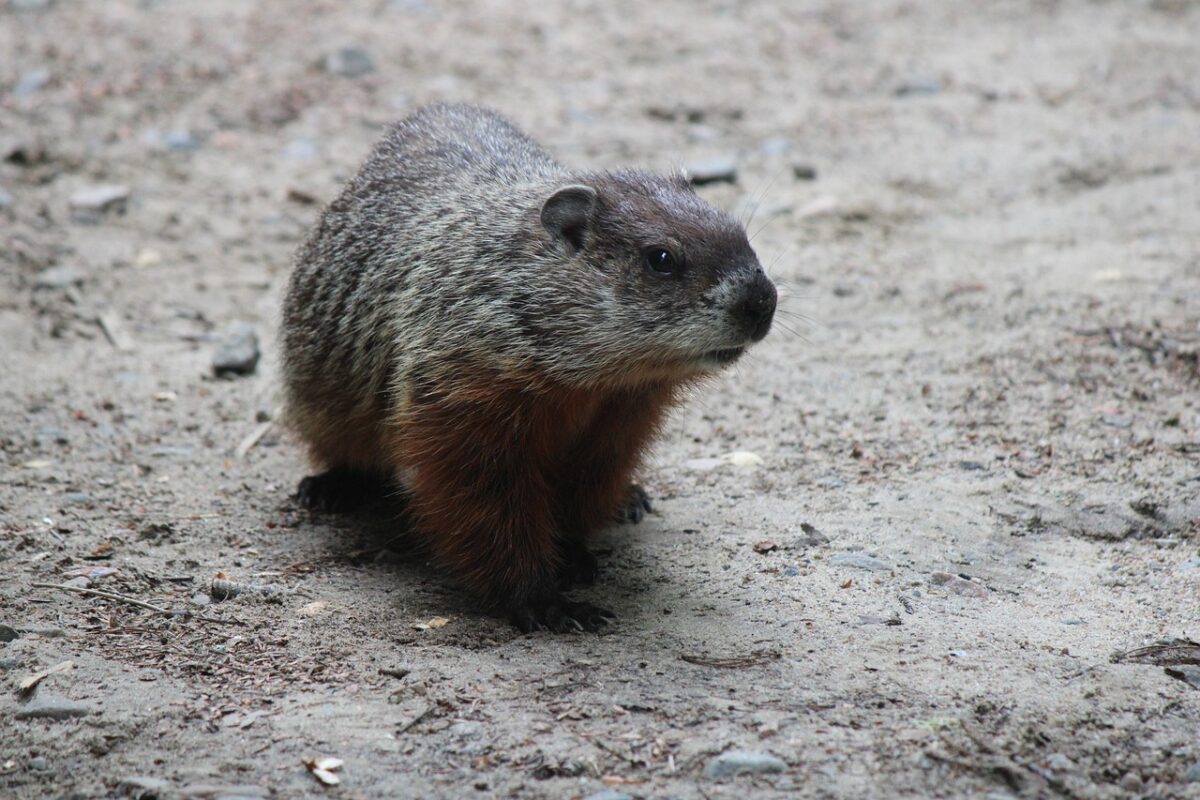
These cute little miniatures are interesting upon closer investigation. Check out the amazing facts about woodchucks discussed below.
#1 About Their Hibernation
Only a few animals go into full hibernation, including groundhogs. They go into hibernation between the months of October and March. The body temperature of a woodchuck falls below 40°F during hibernation, and its heart rate decreases from 100 to 4 beats per minute.
To spend the winter, they construct a separate “winter burrow.” This burrow is typically located in a woody or overgrown location, below the frost line, and maintains a constant temperature considerably above freezing throughout the winter.
By February, up to half of a hibernating woodchuck’s body weight is lost. In order to survive until the arrival of the warmer spring weather, they reemerge from hibernating with some body fat still present.
#2 About Their Burrows
Woodchucks live in large tunnel-systems measuring 50-100 feet long and two to six feet deep. These covert burrows provide shelter from predators, breeding grounds, and places to hibernate.
Their burrows typically have a main entrance with multiple chambers with specific uses, including nesting or waste storage. Each burrow opening measures between ten and twelve inches in diameter and is typically identified by a mound of dirt in the form of a crescent.
Burrow entrances frequently resemble moderate holes connected to an underground network when viewed from the surface. The primary entrance is typically marked by a nearby sizable pile of earth that these species use for sunbathing and observation.
#3 Harmless Creatures
Woodchucks pose no danger to humans. However, gardens, fences, and various foundations are susceptible to extensive and expensive damage.
They have the ability to enter engine compartments, where they can obliterate them, and gnaw through electrical lines. In most cases, a groundhog would typically run away if you come across one. Groundhogs have occasionally bitten people, but these incidents are rare.
#4 Rabies Infection
It is unlikely that woodchucks are big sources of any bacterial infections that can be passed on to people. However, they are susceptible to becoming aggressive after rabies has fully taken possession of them.
93% of the 371 rodent cases of rabies notified to the CDC involved woodchucks. The CDC tracks rabies infections and urges those attacked by an animal to get medical help immediately. An estimated 1-3 rabies-related deaths occur each year in the US.
It’s crucial to seek medical assistance immediately after being bitten by one and to receive the rabies vaccine.
#5 Tularemia Infection
The bacteria Francisella tularensis is the source of the disease tularemia, sometimes referred to as “rabbit fever.” Animals, particularly groundhogs, rabbits, and hares, frequently carry this virus, typically brought on by insects.
Humans can get tularemia through contact with an infected groundhog or its feces. Cough, chest pain, and breathing difficulties may eventually result from the illness infection. Skin ulcers and enlarged lymph nodes are other indications of infection.
#6 Self-defence
Groundhogs use tree climbing to escape predators and emit whistles when they feel threatened. To young woodchucks, the whistling sound acts as a warning call. To protect themselves, young woodchucks hide around and within the den.
Adult groundhogs, on the other hand, utilize their teeth to defend themselves and make a loud whistle to scare off predators.
Signs That Indicate A Woodchuck On Your Property
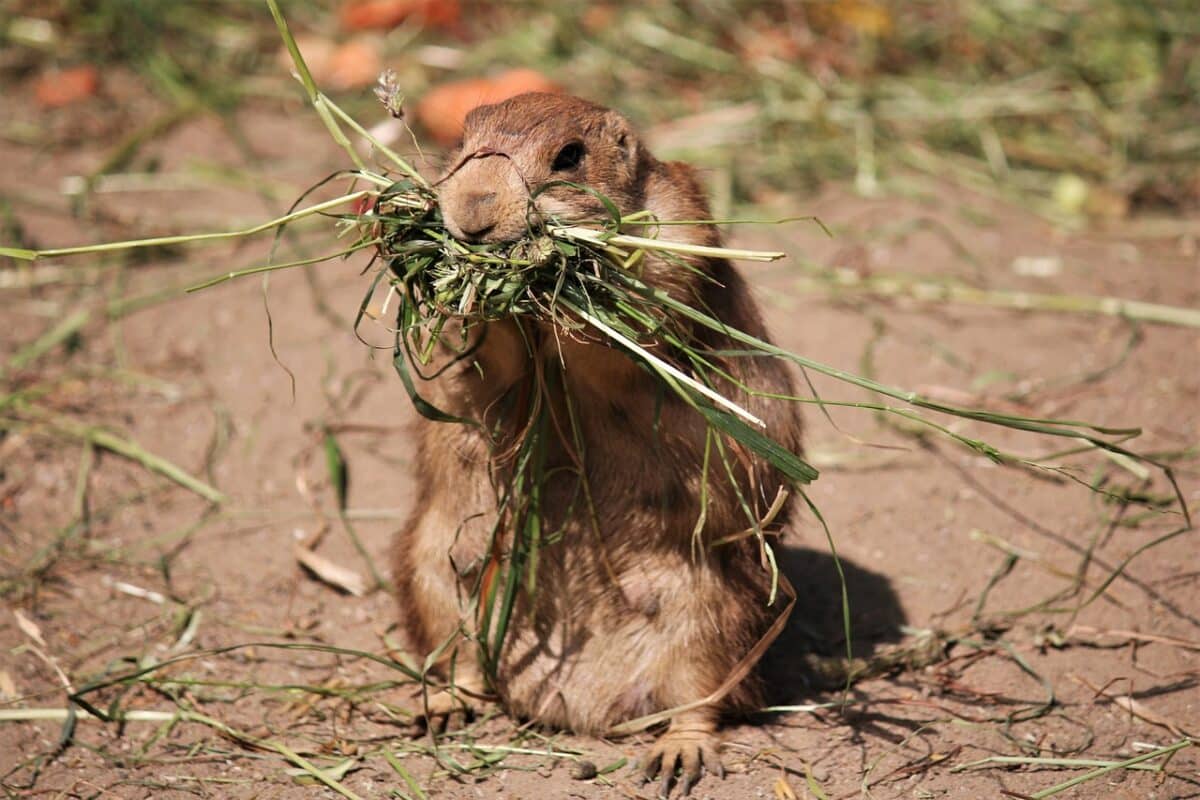
By watching for evidence of digging, you can quickly tell if you have a groundhog problem. Woodchuck infestations can be indicated by destroyed crops, harmed ornamental plants, and scent-marking damage.
There may be spots in your yard where the ground feels soft, or the soil is quite loose. Also, you may observe the uplifted ridges that traverse your garden.
Moreover, destruction to the grasses, stripping of root systems, and harm to flowerbeds are other signs groundhogs leave behind.
Should You Care If A Woodchuck Makes Home Within Your Property?
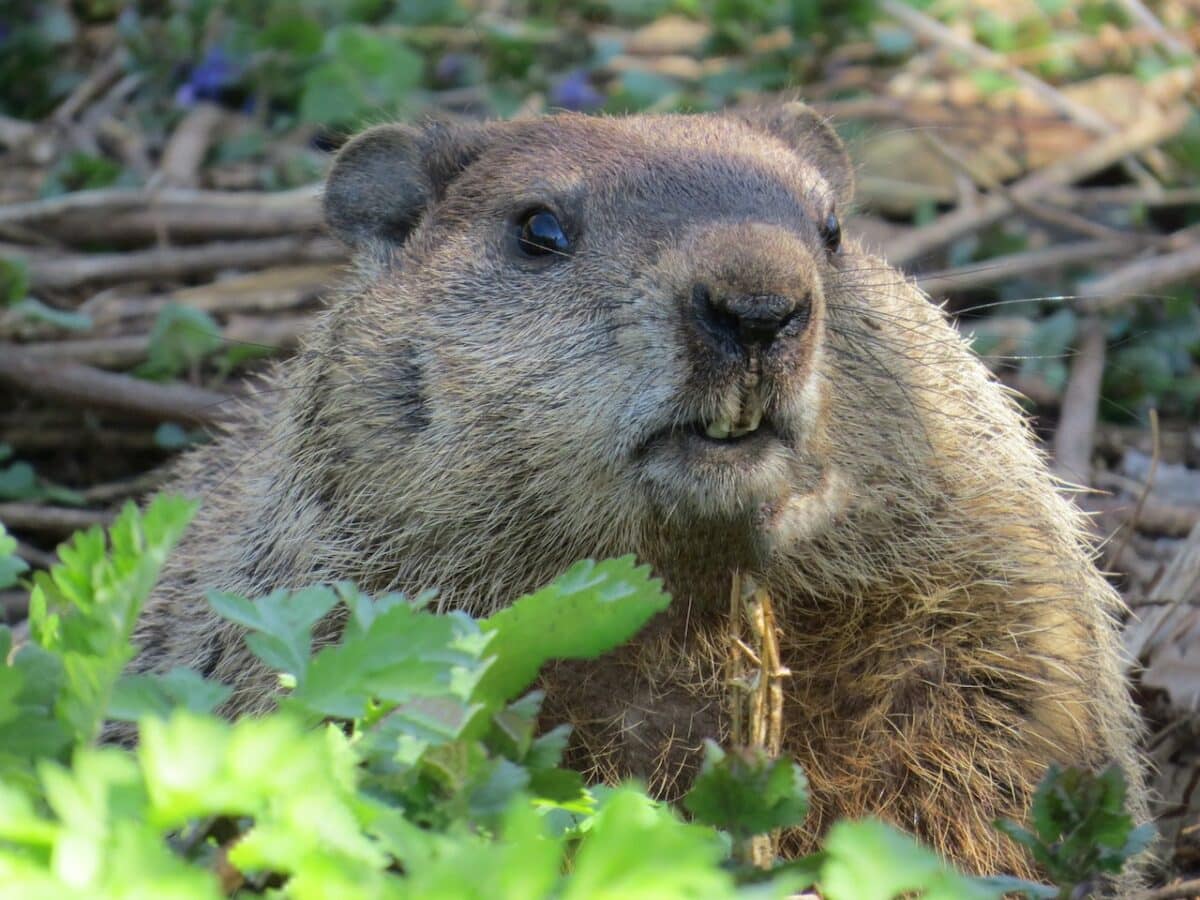
It’s crucial to realize that despite being adorable and furry little creatures, they can actually bring quite a bit of harm. Here are a few facts about woodchucks that you may not be aware of if you’ve never experienced a woodchuck issue.
#1 They Eat Crops And Gardens
Woodchucks occasionally consume field or garden crops, and they have the potential to do significant harm at a very fast rate. When a woodchuck enters your yard, a huge number of plants are at risk.
The woodchuck burrow systems will disrupt soil, making it unsuitable for agricultural practices. They are annoying animals when they enter any yard because of their consistent and precise diet of vegetables and plants.
#2 They Cause Damage
Woodchucks occasionally come across wires. Since they have a penchant for chewing just about anything they find interesting to investigate, they frequently wind up chewing cables.
They can disrupt your sprinkler system or create an electrical blackout if they nibble through your cables. Additionally, suppose a woodchuck burrow is present in your yard. In that case, it may unintentionally enter slabs, which could develop cracks and eventually collapse.
#3 They Can Harm When Feeling Threatened
Because they can be highly aggressive at times, getting rid of them can be incredibly challenging after they have invaded your yard. Despite the fact that a woodchuck doesn’t intend to hurt you, it is a wild animal and will defend itself if it feels threatened.
Therefore, the best thing to do is to get in touch with a qualified pest and ecological specialist with the equipment and expertise to handle your groundhog issue.
What To Do If You Suspect A Woodchuck In Your Property?
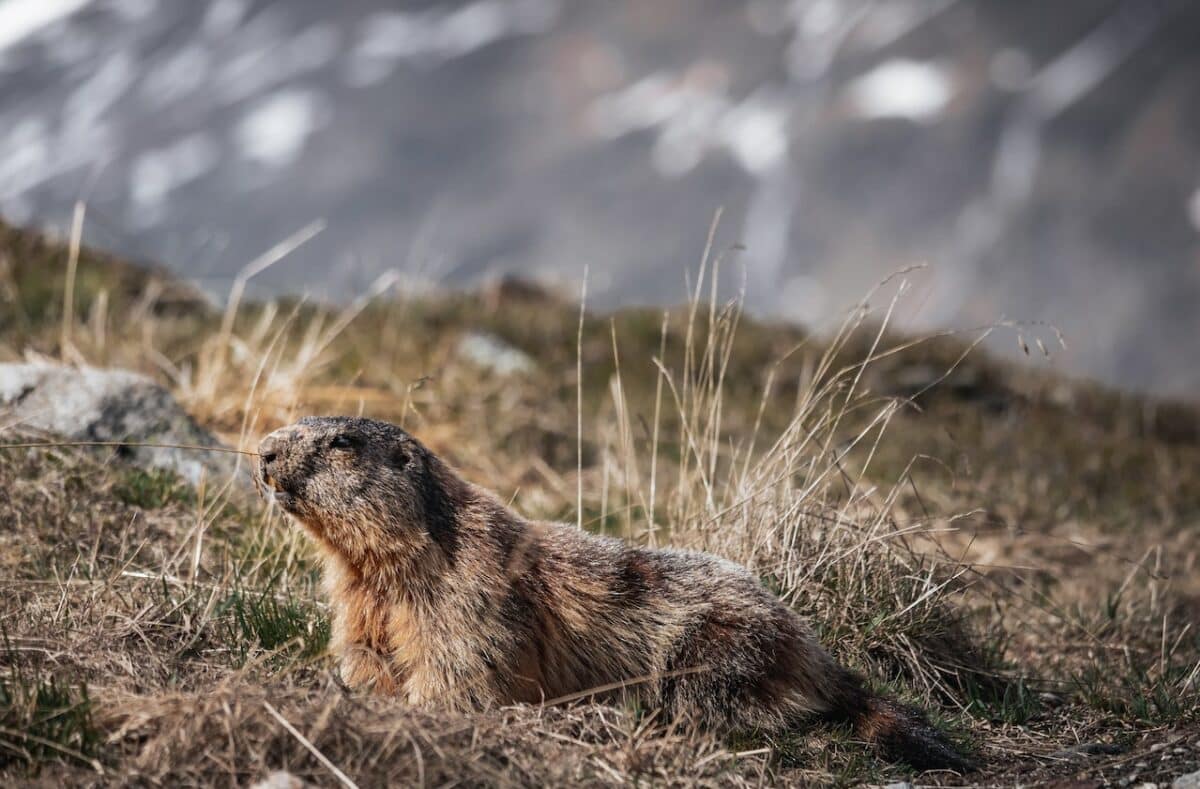
It’s crucial to check the exterior of the house for signs of access points, as groundhogs make their dens in crawlspaces. If you find signs of having woodchucks in your house, make sure to get rid of them following any convenient method mentioned below:
- Homeowners should caulk all cracks and holes, fix any loose siding, and cover staircases and other exposed holes with mesh.
- Just inside the burrow, place something unharmful but pungent-smelling and loosely close the entrance to keep the smell there.
- To keep groundhogs away, get rid of heaps of wood and other spots where they can nest, and keep the underbrush and grass cover low.
- Set traps in the garden or right in front of burrow entrances. Use apples, carrots, or sweet corn as bait, and dig the trap’s bottom into the ground.
- For advice on the most effective groundhog removal strategy for your situation, speak with a certified pest management specialist.
The Bottom Line: Woodchuck vs. Groundhog
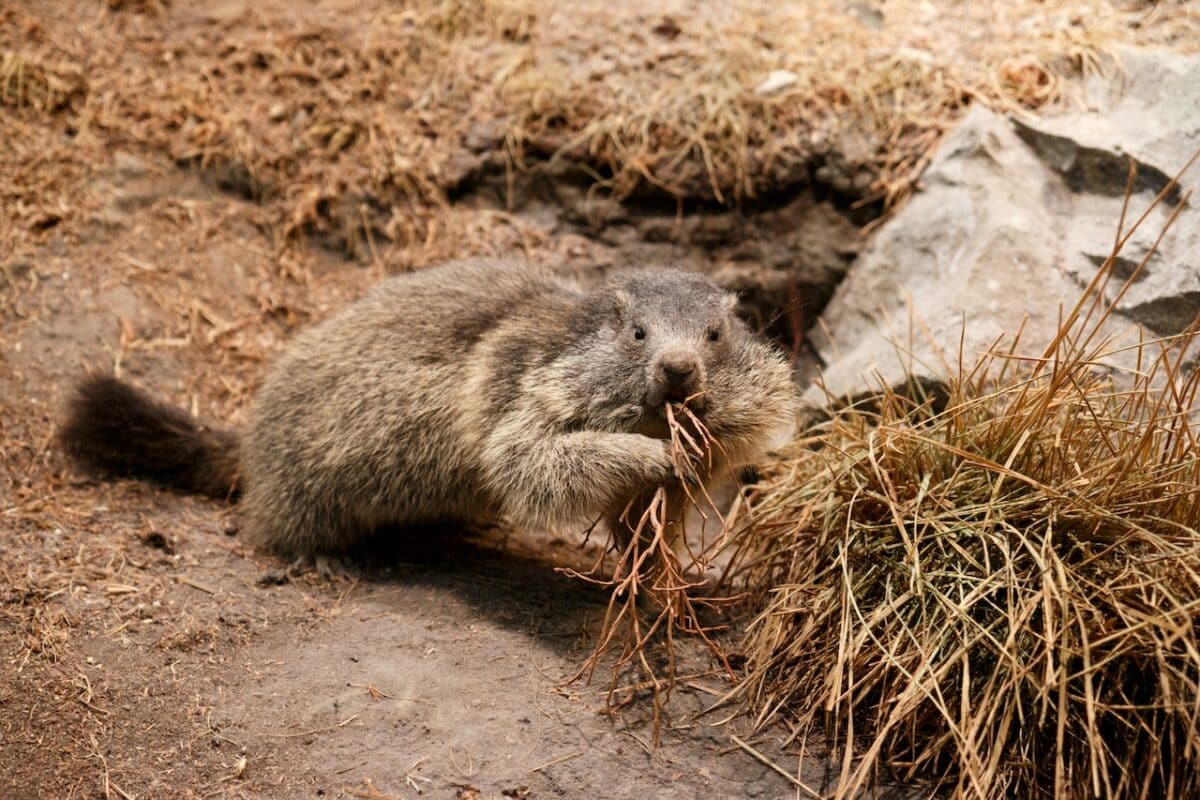
We cannot compare a woodchuck vs. groundhog as they are two names for the same animal.
The woodchuck is a huge ground squirrel with short, muscular legs, sharp, curved claws, a rounded skull, and fur-covered ears. They have a physique optimized for burrowing and are usually harmless. Even though they are harmless, they attack when they feel threatened (as any animal would). They can cause rabies or other infections if they bite you. Their diet compromises insects, tree bark, leaves, and bird eggs in addition to vegetation, including alfalfa, clover, and dandelion.
You can find groundhogs/woodchucks in several habitats (fields, woodlands, hedgerows, and pastures) throughout a large portion of the eastern United States and a large portion of southern Canada. It employs vocalizations to notify other woodchucks of threats and to frighten predators away.
Thank you for reading this article about the woodchuck vs. groundhog! Which name do you prefer to call these burrowing rodents? If you liked this article you will probably like another one in which the groundhog is featured – head over to read our comparison on the groundhog vs. gopher!
Also check out What Do Groundhogs eat.
Join our Forum for free today!


